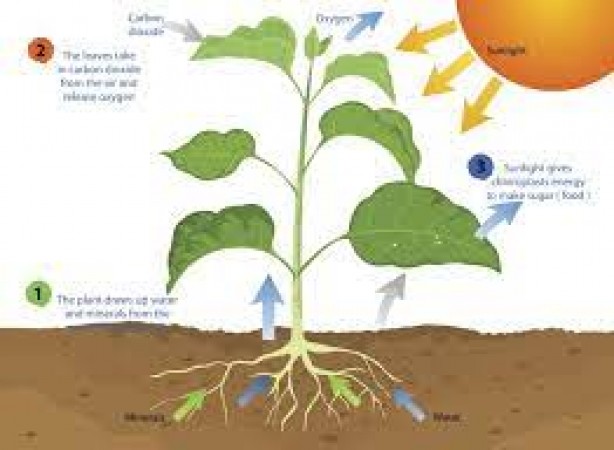
Photosynthesis and cellular respiration are two fundamental processes that play a vital role in the balance of life on Earth. They are interconnected in a unique and symbiotic relationship that sustains living organisms. This article delves into the intriguing connection between photosynthesis and cellular respiration, exploring how they complement each other and contribute to the planet's ecosystem.
Understanding Photosynthesis
Photosynthesis is a biological process that takes place in plants, algae, and some bacteria. It converts carbon dioxide and water into glucose and oxygen using energy from sunlight. The process occurs in specialized structures called chloroplasts, where the green pigment chlorophyll captures solar energy.
The Process of Cellular Respiration
Cellular respiration, on the other hand, is the process through which living organisms convert glucose and oxygen into energy, carbon dioxide, and water. It occurs in the mitochondria, the powerhouses of the cell, and releases energy in the form of adenosine triphosphate (ATP).
The Shared Equation
The relationship between photosynthesis and cellular respiration can be summarized by a simple equation:
Photosynthesis: 6CO2 + 6H2O + sunlight energy → C6H12O6 (glucose) + 6O2 Cellular Respiration: C6H12O6 (glucose) + 6O2 → 6CO2 + 6H2O + ATP (energy)
Complementary Roles of Photosynthesis and Cellular Respiration
Photosynthesis and cellular respiration have complementary roles that maintain the balance in nature. Photosynthesis serves as the foundation of the food chain by producing glucose, which is essential for all living organisms.
Photosynthesis: The Producers
Photosynthetic organisms, such as plants, algae, and some bacteria, are known as producers. They produce their food using sunlight and convert carbon dioxide into oxygen, supporting life on Earth.
Cellular Respiration: The Consumers
Consumers, including animals and humans, rely on glucose produced by photosynthetic organisms. Through cellular respiration, they break down glucose to release energy needed for various activities and bodily functions.
Energy Flow in Ecosystems
The relationship between photosynthesis and cellular respiration results in a continuous flow of energy through ecosystems. Sunlight is the primary source of energy that sustains life on Earth.
The Importance of ATP
ATP is the energy currency of cells. It is produced during cellular respiration and is used for various cellular processes, including muscle contraction, metabolism, and active transport.
The Impact of Environmental Factors
Both photosynthesis and cellular respiration are influenced by environmental factors, which affect their rates and efficiency.
Light Availability
The rate of photosynthesis depends on the availability of sunlight. Plants adapted to different light conditions exhibit various photosynthetic strategies.
Temperature
Temperature plays a crucial role in the rate of cellular respiration. Extreme temperatures can affect enzyme activity and metabolic processes.
Carbon Dioxide Concentration
The concentration of carbon dioxide affects the rate of photosynthesis. Increased CO2 levels can lead to enhanced plant growth.
Adaptations of Photosynthetic and Respiratory Systems
Different organisms have evolved unique adaptations to optimize photosynthesis and respiration.
C3 Photosynthesis
Most plants use C3 photosynthesis, which efficiently captures CO2. However, in hot and dry conditions, this process can be less efficient.
C4 Photosynthesis
Plants utilizing C4 photosynthesis have a specialized pathway that reduces water loss, making them more efficient in arid regions.
CAM Photosynthesis
CAM photosynthesis is adopted by certain plants to conserve water by opening stomata at night and minimizing water loss during the day.
Aerobic Respiration
Aerobic respiration, occurring in the presence of oxygen, is the most efficient way to produce ATP.
Anaerobic Respiration
In the absence of oxygen, some organisms undergo anaerobic respiration, which produces ATP but also results in the buildup of lactic acid or ethanol.
The Historical Significance
The evolution of photosynthesis and cellular respiration significantly impacted the Earth's atmosphere and life forms.
The Human Impact
Human activities, such as deforestation and burning fossil fuels, have disrupted the delicate balance of these processes, leading to environmental issues like climate change.
Photosynthesis and Cellular Respiration in Balance
The balance between photosynthesis and cellular respiration is essential for the sustenance of life on our planet. It ensures the continuous cycling of energy and matter through ecosystems.
Future Prospects and Research
Studying photosynthesis and cellular respiration is crucial for understanding the impact of environmental changes and developing sustainable solutions. The intricate relationship between photosynthesis and cellular respiration is vital for maintaining life on Earth. These two processes work together in harmony, providing energy and sustaining diverse forms of life. As guardians of our planet, it is crucial to preserve this delicate balance for the well-being of current and future generations.
Say Goodbye to Gum Stuck on Clothes: Proven Solutions Inside
Samsung Unveils Galaxy Ring: A Game-Changing Hybrid Wearable Device
Redmi Unveils Redmi Watch 3 Active: A Feature-Packed and Affordable Smartwatch